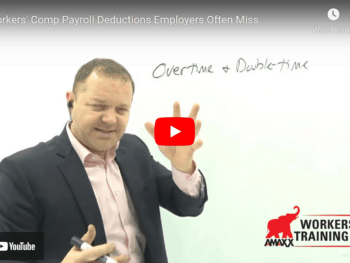Self-Insurance Programs and high deductible programs are the two most common ways for a company to get almost total control over how their claims are handled.
Formal self-insurance is insurance that is accomplished without the use of an insurance company.
A company must file an application with the state insurance commission to become self-insured. They can either handle their own claims in an arrangement called “self-administration” or have a third-party administrator (TPA) handle their claims. In some cases the a TPA can handle the claims in a “dedicated” claims unit where they handle only the claims of that particular company. The term “self-insured/self-administered” is used when a self-insured company handles it own claims in-house (they hire their own adjusters to handle their claims). Many companies that are self-insured participate in industry or state organization made up of other self-insured companies.
The benefits to self-insuring are that a self-insured maintains use of their cash until a loss is paid; however when the loss is paid, if it’s a large claim they often “feel the pain” since none of the risk is transferred they must pay the entire amount. If the division incurring the loss is a smaller division of a large company the cost can equal the amount of a significant percentage of their sales.
Flexibility and control is beneficial because the company selects counsel (and pays for it), settles all claims and makes all other decisions associated with the claim. The adjusters can be part of the workers’ compensation cost control teams, and can make phone calls to employees reminding them about medical appointments, etc. Conversely, if the company does not want to have a return to work program, they pay for all lost days out of pocket. They CAN however, place more emphasis on medical control by retaining a medical director either full-time or part-time to make sure IME cover letters are well-written and perhaps even contact the injured employee and their medical provider (where allowed by state laws). [workersxzcompxzkit). Thus, the emphasis can be place on improved medical care.
Reduced cost of overhead can often be reduced with the insurance function is taken in-house; however, self-administering is not cheap, and a careful analysis should be made before making the decision to self-insure.
While there are benefits, there are also drawbacks. Carefully consider the decision to take the risk on without the use of an insurance vehicle. For more information about what you CAN do to reduce your losses, go to www.ReduceYourWorkersComp.com
Summarized from an article provided by Glenn Trutner from Advisen. Thank you, Glenn. 🙂
WC Calculator www.ReduceYourWorkersComp.com/calculator.php
TD Calculator www.ReduceYourWorkersComp.com/transitional-duty-cost-calculator.php
WC 101 www.ReduceYourWorkersComp.com/workers_comp.php
Do not use this information without independent verification. All state laws are different. Consult with your corporate legal counsel or other professionals before implementing any cost containment programs.
©2008 Amaxx Risk Solutions, Inc. All rights reserved under International Copyright Law. If you would like permission to reprint this material, contact Info@WorkersCompKit.com













